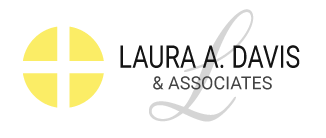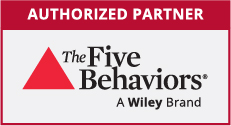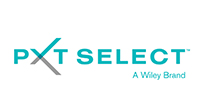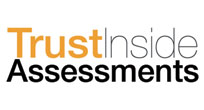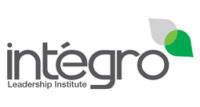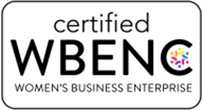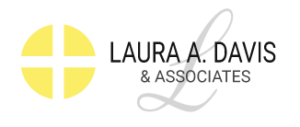
The Emotional Paycheck: Going Beyond Traditional Compensation
Traditional Compensation Researchers have said that the average person will spend one third of their life at work. When put into perspective, that is an enormous amount of time spent investing in an organization and its mission. It is vitally important that workplaces are creating environments that not only provide a paycheck but provide the more intangible benefits that attract and retain top performers. In an age of increased flexibility and a robust job market,

Learn How to Build Strong Teams with Patrick Lencioni’s Five Behaviors® Model
In today’s fast-paced and competitive business landscape, the success of an organization hinges on the strength and effectiveness of its teams. High-performing teams don’t just happen by chance; they are intentionally cultivated and nurtured through shared behaviors and values. One of the most influential frameworks in team development is the New York Times best-seller, The Five Dysfunctions of a Team, introduced by renowned author and organizational consultant Patrick Lencioni. With more than 4 million copies

Creating a Culture of Teamwork While Working From Home
In today’s technological world, people can tune in to work from virtually anywhere at any time. This provides great flexibility on the employee side but poses a unique challenge for the employer. As the workforce continues to expand across the physical and virtual space, companies are searching for ways to create a positive experience for all employees, regardless of their location. According to Deloitte, “by focusing on the employee experience, HR leaders can improve employee

Establish a Foundation for Effective Teamwork with The Five Behaviors®
How do you unite three global groups into one cohesive team and set them up for success? Finding a sustainable solution to that question ranked at the top of Darci Kleindl’s task list when she accepted the role as general manager of sales enablement and sales excellence for the Microsoft Business Solutions (MBS) organization within the Dynamics division. Kleindl entered a unique and challenging business situation with her new position. Three weeks into her role,

From Turnover to Teamwork with The Five Behaviors®
5 BEHAVIORS CASE STUDY What would you do if half of your leadership team was ready to quit? Ohio Living Mount Pleasant took it as an opportunity to rediscover their team’s passion and purpose. Introverts, extroverts, and everyone in between make up today’s workforce. While each person is unique, everyone shares the need to feel engaged and valued at work. Unfortunately, some organizations may overlook employee engagement while focusing solely on daily operations and change

Soft Skills, Big Impact: Elevating Workplace Satisfaction
Job seekers have more options than ever in this competitive job market and as we have learned, their priorities have evolved since before the pandemic. Professional development and lifelong learning have emerged as important benefits that organizations can offer to attract and keep top talent while filling the ever-present skills gap created by The Great Resignation, Quiet Quitting, The Great Gloom, and more. Professional development is important not only for the reskilling and upskilling opportunities

From Disconnected to Determined: How the Five Behaviors® Helps Teams Thrive
The Wiley Workplace Intelligence Annual Report Much like the years preceding it, 2023 brought rapid change and innovation to the workplace. A year marked by technological advancement and continued attempts to recalibrate after the disruption of the pandemic, 2023 represented a year of transition. Wiley Workplace Intelligence spent the year investigating the important issues that emerged in organizations. From the early adoption of artificial intelligence to the omnipresent hybrid/remote/office debate to psychological safety, Wiley’s annual

Establishing a Foundation of Trust
Trust is the foundation of The Five Behaviors®, and without it, the collaboration vital for team success becomes elusive. Trust requires vulnerability, the assurance that colleagues have each other’s backs, and confidence in one another’s intentions. By exploring the first behavior, as outlined by Patrick Lencioni in the New York Times best-seller The Five Dysfunctions of a Team, we’ll uncover the profound significance of trust within teams, unravel its dynamics, and examine its pivotal role

Top 10 Takeaways from 2023
The Wiley Workplace Intelligence Annual Report Much like the years preceding it, 2023 brought rapid change and innovation to the workplace. A year marked by technological advancement and continued attempts to recalibrate after the disruption of the pandemic, 2023 represented a year of transition. Wiley Workplace Intelligence spent the year investigating the important issues that emerged in organizations. From the early adoption of artificial intelligence to the omnipresent hybrid/remote/office debate to psychological safety, Wiley’s annual

People Skills Top List of 2024 Workplace Priorities
By Mark Scullard, Wiley’s Senior Director of Innovation and Research 2023 proved to be another year of rapid evolution in the world of work. Economic and global instability, the omnipresence of organizational change, and advancements in AI kept everyone on their toes as leaders and organizations considered how to navigate, and lead, in an unsteady environment. Over the last year, Wiley Workplace Intelligence brought readers workplace research on topics from The Great Resignation, AI, and

Three Communication Insights to Turn The Great Gloom into The Great Bloom
By Mark Scullard, Wiley’s Senior Director of Innovation and Research Many organizations understand the power of having cultures that foster trust, communication, and collaboration but do not yet have the tools they need to make that vision a reality. When individuals feel comfortable taking risks, expressing ideas and concerns, asking questions, and admitting mistakes without fear of negative consequences, that is considered a psychologically safe environment, a term originated by author and Harvard Business School

Psychological Safety at Work: The Key to Success and How to Get It
Many organizations understand the power of having cultures that foster trust, communication, and collaboration but do not yet have the tools they need to make that vision a reality. When individuals feel comfortable taking risks, expressing ideas and concerns, asking questions, and admitting mistakes without fear of negative consequences, that is considered a psychologically safe environment, a term originated by author and Harvard Business School professor Amy Edmondson. Given all of the changes in the

Artificial Intelligence in Learning and Development: Five Surprising Facts You Need to Know
The last few years have been a roller coaster for learning and development professionals around the world. First, there was the abrupt transition to the hybrid workplace, which required entire organizations to upskill and reskill employees under immense pressure. With the ever-evolving world of work, C-suite executives were driving a strategic focus on organizational performance, putting learning and development and human resources professionals, as well as managers at large, in the position of having to

8 Leadership Blind Spots and How to Avoid Them
Every leader is unique and brings their own style to leading and managing others. Successful leaders can help teams and organizations thrive; however, less effective leaders can negatively impact an organization and its people. Learn how to optimize your leadership style by avoiding these eight key blind spots. 1. Poor Communication How to avoid it: Listen actively and encourage others to share their ideas and concerns. To communicate effectively, a great leader must also articulate

Four Generations at Work: The Unexpected Truth
By Mark Scullard, Wiley’s Senior Director of Innovation and Research There has been a lot of attention paid to the increasing number of generations currently in the workforce. From the tech savvy and ambitious Gen Z-ers to the more analogue and experienced baby boomers, with Gen X and millennials in between, the differing needs of the generations has been a hot topic in the world of learning and development. Wiley Workplace Intelligence sought to get

Reducing Unconscious Bias in Hiring and Selection
It’s easy to rely on past experiences, beliefs, and instincts to make speedy hiring and selection decisions, but all three are one-way tickets for unconscious bias to enter your organization. The fact that unconscious bias is called “unconscious” is significant. These biases are deeply embedded in even the smallest everyday actions making them difficult to recognize, much less act on. In the context of hiring and selection, unconscious bias can lead your organization to inadvertently

Employee Conflict: Do Managers Have the Tools They Need?
By Mark Scullard, Wiley’s Senior Director of Innovation and Research Conflict. A powerful word that can inspire a variety of feelings – excitement, avoidance, and fear to name a few. Conflict at work can be even more incendiary. Many of us have been in situations where we disagree with a colleague or manager, engage in power struggles, or have a different perspective on the “right” way to go about completing a project. The general perception

Widening Skills Gaps: Reflections on a Growing Trend
By Mark Scullard, Wiley’s Senior Director of Innovation and Research In the years since the start of the pandemic and in the wake of The Great Resignation, organizations risk facing unexpected skills gaps within their workforce. A variety of factors can impact the size and scope of an organization’s skills gaps, but one thing is certain: it must be addressed in order to stay competitive and attract and retain top talent. Wiley Workplace Intelligence sought

The Culture Conundrum: What In-Person Work Mandates Get Wrong
By Mark Scullard, Wiley’s Senior Director of Innovation and Research Over the last year, an increasing number of organizations have abandoned the remote work model in favor of hybrid or full return-to-work policies. This is often done in the name of culture, with executive leadership expecting to revive or renew the same culture the company had pre-pandemic, simply through in-office interactions. The increasing popularity of these policies made us wonder – does being in the

The Reality of Work: Trends Come and Go, Where Are We Now?
By Mark Scullard, Wiley’s Senior Director of Innovation and Research Since the beginning of the pandemic, the workplace has continued to evolve in rapid and unexpected ways. For example, the move to working from home at the time seemed monumental, and the sudden shifts were destabilizing to many. Fast forward three years and working remotely is a mainstream model that many people prefer. Despite the challenges of the pandemic, people have taken the opportunity to
